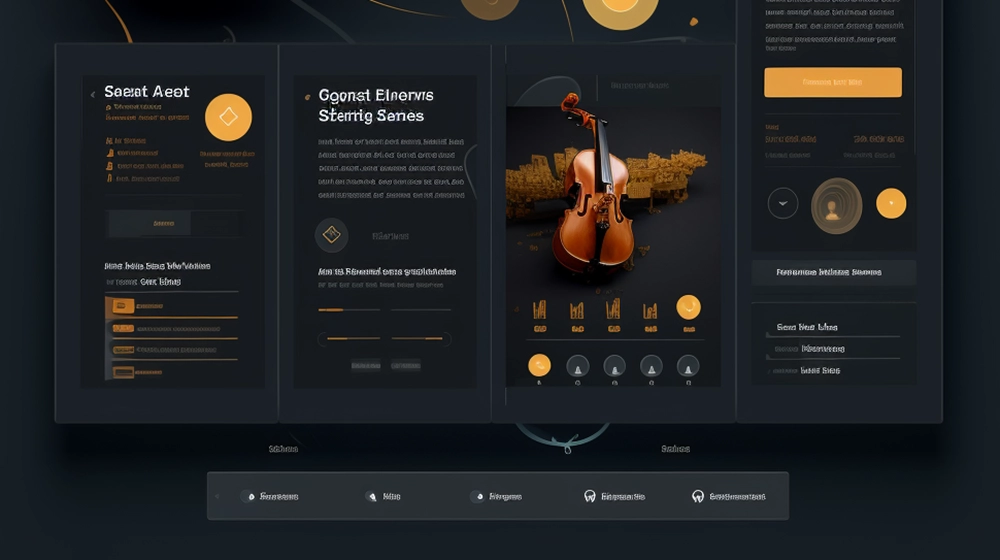Hey, awesome website owners, content wizards, and SEO ninjas! Ever wonder how some websites become popular on Google? Well, it’s no accident—it’s all about mastering On-Page Optimization Techniques.
It’s like having a magic key that unlocks Google’s top rankings. This isn’t just about making Google happy, though. It’s about giving people who visit your website a high-five kind of experience.
In this post, we’re gonna spill the beans on the hottest On-Page Optimization Techniques that Google loves right now. We’ll cover everything from choosing the right keywords, like a chef picks herbs, to making your site so fast it’s like a superhero.
Plus, we’ll make sure your website looks great on phones, because who doesn’t use their phone for everything these days?
So, buckle up! By the end of this, you’ll know how to make your website the talk of the town (or at least the talk of Google’s search results).
The Foundation of On-Page SEO – Understanding Google’s Guidelines
Imagine building a castle. You’d want a rock-solid foundation, right? The same goes for On-Page Optimization Techniques. To get Google to notice you, there are some rules to follow.
What are the most current on-page optimization techniques recognized by Google?
Google is always updating, but right now, it’s all about making your site super user-friendly.
That means it has to be easy to use, fast, and packed with helpful stuff. It’s like making sure your castle has the best doors, towers, and moats—everything in tip-top shape.
First things first: Know your visitors.
Like knowing your friends’ favorite snacks, you’ve got to know what words people search for. These are your keywords, and they’re golden. Use them wisely in your content, and Google will start to think you’re pretty cool.
Keep it fresh and original.
Google doesn’t like copycats. Make sure your content is as unique as a unicorn. It’s gotta be useful, too, like a Swiss Army knife—lots of tools in one. And always keep your content up-to-date. If something changes, update your site. It’s like keeping your castle stocked with the latest gear.
Make friends with mobile devices.
More people surf the web on their phones than ever before. So, your website needs to look awesome and work smoothly on mobile. It’s like making sure your castle has a drawbridge that’s easy for everyone to cross.
Speed is your new best friend.
No one likes to wait, especially Google. Make your website so fast that visitors can find what they need in a snap. It’s like making sure the guards at your castle gates are super quick to let friends in.
Be organized.
Your website should be like a treasure map that’s easy to read. Use headings and lists to break things up and make everything easy to find. It’s like putting up big, shiny signs in your castle to show where everything is.
Now, you might be thinking, “Wow, that’s a lot to do!” But don’t worry. We’re here to walk you through every step. So, let’s roll up our sleeves and start optimizing!
Sprinkling Keywords Like Magic Dust – The Art of Content Optimization
Just like a chef adds the perfect amount of seasoning to make a dish sing, the sprinkle of primary and secondary keywords in your content can turn it from blah to ta-da!
But it’s not about dumping in a bunch of words and hoping for the best. It’s about mixing them in so smoothly that your readers—and Google—can’t help but love it.
How can we effectively integrate primary and secondary keywords into our content?
Think of your primary keyword as the main character of your story. It’s the “On-Page Optimization Techniques” we’re focusing on.
This star of the show should appear in all the right places: your title, headings, and throughout your content, but without crowding the stage. Aim for that sweet spot—not too much, not too little.
Your secondary keywords are like the supporting cast. They back up your main idea without stealing the spotlight. They should pop up here and there, like Easter eggs for Google to find. But remember, they’re supporting—they shouldn’t overwhelm the main character.
Here’s how to make that magic happen:
- In the Introduction: Drop your primary keyword in the first 100 words. It’s like saying “hello” to Google and letting it know what your page is about.
- In Headings and Subheadings: Sprinkle in those keywords like stardust in H1 and H2 tags. It gives readers (and search engines) a sneak peek of what’s in each section.
- In the Body: Weave your keywords through your paragraphs in a way that feels natural. It should be like a hidden melody that enhances the song, not a loud noise that drowns it out.
- In the Conclusion: Tie it all up with your primary keyword one last time. It’s like ending your show with a grand finale that leaves the audience clapping for more.
By blending these keywords into your content with a pinch of creativity and a dash of subtlety, you’ll create a gourmet dish that Google and your visitors will savor.

Crafting Content That Glows – The Heart of On-Page SEO
The quality of your content is like the pulse of your website. It’s what keeps visitors coming back for more. But it’s not just about what you say—it’s about how you say it. Google is like a savvy reader that can tell if you’re just filling the page with fluff or if you’re serving up juicy, succulent info-steaks.
What role does the quality of content play in on-page SEO, and how can we improve it?
Picture this: you’re telling a story around a campfire. The better the story, the more everyone leans in. High-quality content does the same thing—it pulls people in and keeps them hooked.
Here’s how to make your content glow:
- Be a Know-It-All: Know your stuff inside and out. When you’re an expert, it shows, and Google gives you a high-five in the rankings.
- Be Helpful: Make sure your content solves problems. It’s like being the friend who always has the toolbox when something breaks.
- Be Clear: Write so that even your grandma gets it. If people understand and like your content, they’ll stick around, and that’s a big win for SEO.
- Be Engaging: Tell stories, use examples, and throw in a joke or two. Make reading your content as fun as eating popcorn at the movies.
- Be Fresh: Keep things up-to-date and add new insights. It’s like refreshing your wardrobe—you gotta keep it stylish and current.
Creating content that ticks all these boxes is like lighting a beacon that draws people and search engines to your shore. It’s the heart of on-page SEO, and when you get it right, it’s pure gold.
By focusing on keyword integration and content quality, you’re laying down a carpet of welcome for both search engines and human visitors. Stay tuned for the next steps, where we’ll dive into the magic of meta tags, user experience delights, and the fast-paced world of site speed optimization.
Meta Magic: Crafting Click-Compelling Title Tags and Descriptions
Imagine your webpage is a novel on a shelf in a vast library. Your title tag and meta description are like the spine and blurb that entice readers to pick it up. Now, let’s get them off the shelf and into the hands of eager readers with some meta magic!
How do we optimize title tags and meta descriptions to increase click-through rates?
Think of your title tag as the flashy headline on a newspaper. It needs to be catchy, informative, and, most importantly, inclusive of our star keyword “On-Page Optimization Techniques”.
But there’s an art to it—a mix of creativity and strategy that makes someone stop and say, “I’ve got to read this!”
- Start Strong: Kick off your title tag with the primary keyword if you can. It’s like starting a race at full speed.
- Be Descriptive: Tell the searcher exactly what they’ll get, but with enough mystery to make them click.
- Stay Within Limits: Keep your title under 60 characters so it doesn’t get cut off in search results.
Your meta description is the sneak peek that hooks the searcher. It’s the back-cover synopsis that makes them want to dive into the story.
- Feature the Keyword: Weave in “On-Page Optimization Techniques” naturally. It’s like the recurring theme of your favorite song.
- Make it Action-Packed: Use active voice and powerful verbs to drive action.
- Benefit-Driven: Spell out the value. Tell them why reading your article will be the best thing they’ll do today.
- Invoke Curiosity: Leave them wanting more. It’s the cliffhanger that drives them to click.
By marrying SEO with marketing savvy, your meta tags can become powerful magnets for clicks.

The User Experience Symphony: Harmonizing Optimization with Enjoyment
In the concert hall that is your website, every element plays a part in the symphony of user experience (UX). Just like in music, rhythm, harmony, and dynamics matter. Let’s tune our instruments and compose a masterpiece.
In what ways can we enhance the user experience through on-page optimization?
Great UX is the hidden conductor that guides your visitor through your content seamlessly. It’s not just about looking good—it’s about feeling right.
- Responsive Design: Ensure your pages flow beautifully on any device, much like a fluid melody that adapts to any instrument.
- Intuitive Navigation: Make it as easy to browse as humming a familiar tune. Clear menus and logical structure are your best friends.
- Engaging Content: Mix up text with images, videos, and bullet points. It’s like varying the tempo and instruments to maintain interest.
- Interactive Elements: Include tools or widgets that invite action. It’s the part of the song where the audience claps along.
- Accessible and Inclusive: Make sure everyone can enjoy your content, regardless of how they interact with it. It’s like making sure there’s a seat for everyone at the concert.
When every element sings in harmony, users don’t just visit your page; they experience it. And Google takes note, rewarding sites that play the UX symphony to perfection.
With these strategies in place, you’re well on your way to crafting an on-page SEO strategy that resonates with both search engines and real people. Next, we’ll explore the visual appeal with image optimization and then rush into the need for speed in site performance.
Picture Perfect SEO: Optimizing Images and Multimedia for Better Engagement
Lights, camera, optimization! Just like a blockbuster movie, your website’s images and multimedia need to be perfectly crafted to capture the audience’s attention. Let’s roll out the red carpet for some picture-perfect SEO strategies.
What are the best practices for optimizing images and multimedia elements on a webpage?
- Compress for Performance: High-quality images can be heavy, leading to slow load times. Use tools like Adobe Photoshop or free online compressors to reduce file size without losing clarity. It’s like editing a film to keep only the best shots.
- Descriptive File Names: Name your image files with descriptive, keyword-rich titles. It’s like giving your movie a title that tells a story at a glance.
- Alt Text is Key: Always use alt text to describe your images. This isn’t just for SEO; it’s for accessibility, ensuring everyone can understand the content, much like subtitles in a film.
- Responsive Images: Ensure your images are mobile-friendly. With responsive design, your images will look great on any screen, like a movie that’s as stunning on a smartphone as it is in IMAX.
- Lazy Loading: Implement lazy loading so images only load as they’re needed. It keeps the initial page load fast, like a trailer that only shows enough to entice the viewer.
- Use the Right Format: Choose the right file type (JPEG, PNG, GIF) for the job. Think of it as casting the right actor for the role to ensure the scene is perfect.
By optimizing your images and multimedia, you’re not only boosting SEO but also enhancing user engagement. When images are quick to load and easy to understand, they add value to your content and keep visitors coming back for more.
The Need for Speed: Accelerating Your Site’s Performance
In the digital race, speed wins. Your site’s loading time is a critical player in the game of SEO. Let’s turbocharge your website to ensure it crosses the finish line in record time.
How does site speed impact on-page SEO, and what tools can we use to improve it?
- Google’s Speed Insight: Use Google’s PageSpeed Insights to get a comprehensive report on your site’s performance. It’s like having a pit crew analyze your race car to find every possible improvement.
- Caching for Quick Returns: Implement caching to store copies of files so that returning visitors get faster load times. It’s like giving your audience a fast pass to their favorite rides.
- Optimize Code: Minimize HTML, CSS, and JavaScript. Clean and efficient code makes for a faster site, much like a well-oiled machine.
- CDN Services: Use a Content Delivery Network (CDN) to distribute your content globally. This ensures that no matter where your visitors are, they’re getting the fastest version of your site, akin to a worldwide broadcast of a hit show.
- Regular Maintenance: Regularly update and maintain your website. Outdated plugins and themes can slow you down, much like an old set of tires on a race car.
By putting these speed strategies into gear, you’ll not only boost your SEO but also improve user satisfaction. A fast-loading website keeps users engaged and reduces bounce rates, signaling to Google that your site deserves a pole position in search results.
With your images now optimized and your website running at peak performance, you’re setting the stage for a truly optimized online presence. Up next, we’ll look at how to refine your site’s HTML and ensure mobile-friendliness for an unbeatable SEO strategy.

The Anatomy of SEO: HTML Tag Optimization
Diving into the code may not be everyone’s cup of tea, but when it comes to on-page SEO, it’s like finding the secret passages within a grand castle. Each HTML tag is a stone in the foundation of your site’s SEO strategy.
What are the essential HTML tags to optimize for better search engine visibility?
- Title Tags: Your title tag is the marquee of your webpage. It should feature your target keyword and accurately describe the page’s content in 60 characters or less. It’s the headline that draws the crowd.
- Meta Descriptions: While not a direct ranking factor, meta descriptions are your sales pitch in the search results. A compelling description with a call-to-action can significantly improve click-through rates. Think of it as the intriguing book blurb that gets the reader to open the book.
- Header Tags (H1, H2, H3): Organize your content with header tags. They’re the chapters in your story, guiding readers and search engines through your content.
- Schema Markup: Implement schema markup to provide search engines with precise information about your content. It’s like a detailed map for Google, highlighting the landmarks of your site.
- Canonical Tags: Use canonical tags to point search engines to the definitive version of a page, preventing duplicate content issues. It’s like telling a story consistently, without confusing different versions.
- Alt Attributes for Images: We’ve touched on this, but it bears repeating. Alt attributes in images provide a text alternative for search engines and visually impaired users. This attention to detail can elevate your SEO significantly.
Optimizing these HTML tags helps search engines understand and rank your content more effectively. But that’s not the end of the story. In the next section, we’ll uncover how to captivate the ever-growing audience of mobile users.
Mobile Mastery: Crafting a Mobile-Friendly Experience
With over half of global web traffic coming from mobile devices, having a mobile-friendly website is not just a recommendation; it’s imperative. Let’s ensure your website is ready for the spotlight in Google’s mobile-first indexing.
How can we ensure that our website is mobile-friendly and compliant with Google’s mobile-first indexing?
- Responsive Design: Employ a responsive design that adapts to any screen size. It’s like having a universal key that unlocks your content on any device.
- Touch-Friendly Navigation: Make sure navigation menus and buttons are touch-friendly. Users should find it as easy to browse your site as flipping through a favorite magazine.
- Fast Mobile Load Times: Speed is even more crucial on mobile. Optimize for quick loading to cater to users on the go.
- Avoid Flash: Use modern web technologies like HTML5 instead of Flash, which isn’t supported by most mobile devices.
- Viewport Meta Tag: Include the viewport meta tag in your HTML to control the page’s dimensions and scaling on different devices.
- Google’s Mobile-Friendly Test: Utilize Google’s Mobile-Friendly Test tool to check your site’s performance on mobile devices.
By mastering these mobile optimization techniques, you are not just following Google’s guidelines; you’re also providing a seamless experience for your audience, no matter how they access your site.
The next sections will continue to build upon these foundational elements of on-page optimization, ensuring that you’re equipped with all the tools and knowledge to rise to the top of the search engine rankings.
Staying Ahead: Adapting to Google’s Evolving Algorithms
In the fast-paced world of SEO, resting on your laurels can mean getting left behind. Google’s algorithms are constantly evolving, and so should our on-page optimization strategies.
What strategies can we employ to keep our on-page optimization techniques up-to-date with Google’s evolving algorithms?
- Stay Informed: Keep abreast of the latest updates from Google. Follow SEO news platforms, participate in webmaster forums, and subscribe to Google’s own Webmaster Central Blog.
- Quality Content: Continue to prioritize high-quality, valuable content. Google’s algorithms are increasingly sophisticated at recognizing truly useful content for users.
- User Experience: Regularly assess and enhance the user experience (UX) on your website. Google’s algorithms are increasingly factoring in UX signals.
- Mobile Optimization: As mobile-first indexing becomes the norm, ensure your mobile site is as polished as your desktop version.
- Voice Search Optimization: With the rise of voice-activated devices, optimize for voice search by including natural language and question-based queries.
- AI and Machine Learning: Stay updated on how AI and machine learning are being integrated into Google’s algorithms and how you can adapt your SEO strategies accordingly.
By remaining vigilant and adaptable, your website can not only maintain but improve its standings in the SERPs, keeping the “On-Page Optimization Techniques” at the core of your strategy.

Final Thoughts and Next Steps
As we draw closer to the end of our comprehensive journey through on-page optimization, it’s crucial to reiterate the importance of an ongoing commitment to these techniques.
While we’ve covered extensive ground, the nature of SEO is such that the learning and refining process is never truly complete. Remember to:
- Monitor and Analyze: Regularly check your website’s analytics to understand how your on-page efforts are affecting your rankings and traffic.
- Test and Tweak: Be willing to experiment with different on-page strategies to see what works best for your unique content and audience.
- Stay Flexible: Adapt to changes not just by Google, but also shifts in user behavior and technological advancements.
- Educate Yourself: Consider SEO-related courses and certifications to deepen your knowledge and stay at the forefront of the industry.
- Seek Feedback: Engage with your community and solicit feedback to understand how users are interacting with your site and content.
In the next section, we’ll encapsulate our expansive guide with key takeaways and actionable advice, empowering you to leverage “On-Page Optimization Techniques” for SEO success.
The On-Page Optimization Checklist: Ensuring Peak Performance
As we tie up our comprehensive guide, let’s crystallize our learning into a practical checklist. This checklist will be your go-to resource to ensure that every page on your website is primed for both user satisfaction and search engine recognition.
- Keywords Integrated: Ensure that primary and secondary keywords are seamlessly integrated into your content, titles, and meta descriptions.
- Content Quality: Assess your content for informativeness, engagement, and relevance. Keep it updated and fresh.
- HTML Tags Optimized: Review and refine your HTML tags, including title tags, meta descriptions, header tags, and alt attributes for images.
- User Experience Enhanced: Regularly check your website’s navigability, loading times, and mobile responsiveness.
- Image Optimization: Compress images and utilize proper file formats to ensure quick loading without sacrificing quality.
- Site Speed Monitored: Utilize tools like Google PageSpeed Insights to keep your site running swiftly.
- Mobile-Friendly Design: Regularly test your website’s mobile version and improve for usability and speed.
- Algorithm Updates Tracked: Stay updated with Google’s latest algorithm changes and refine your SEO strategies accordingly.
Recap of Core On-Page Optimization Techniques:
- Keyword Usage: “On-Page Optimization Techniques” featured prominently yet naturally.
- Content Excellence: Valuable, high-quality content that addresses user intent.
- HTML Mastery: Tags crafted to perfection, aiding both users and search engine crawlers.
- Speed Optimization: A swift, seamless user experience from desktop to mobile.
- User Experience Focus: A website that’s a joy to navigate and interact with.
- Image and Multimedia Best Practices: Visuals that captivate and communicate effectively.
- Mobile-First Mindset: A mobile experience that rivals the desktop version.
- Adaptability: A commitment to evolving with the search landscape.
By meticulously following this checklist, you’re not only optimizing for search engines but also honoring your visitors’ needs. This dual focus is the essence of successful SEO.
Final Encouragement:
With the “On-Page Optimization Techniques” we’ve explored, you’re now equipped to unlock new levels of digital visibility and engagement.
It’s about more than just climbing the rankings; it’s about cementing your place at the pinnacle of user-focused, Google-friendly web presence.
As you apply these techniques, remember that SEO is a marathon, not a sprint. Patience, persistence, and continual learning are your allies.
In closing, remember that Vibe Branding and mastering on-page SEO is a journey. Today’s changes are tomorrow’s victories. Keep optimizing, keep refining, and most importantly, keep creating content that serves your audience first. Your dedication to these principles will be the true key to unlocking Google’s top rankings.
Thank you for joining us on this deep dive into the world of on-page SEO. May your efforts be rewarded with high rankings, plentiful traffic, and, most importantly, a thriving audience that values what you offer.




